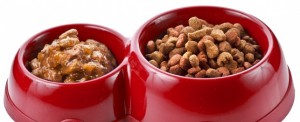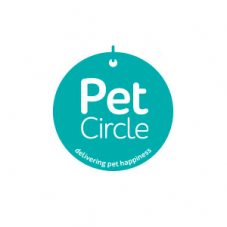
Wondering which type of dog food is best for your pooch? Finding it difficult to choose between the vast array of products that all claim to be superior over the others?
The team at Pet Circle have put together some handy tips.
Here is what you should consider when choosing the best brand for your dog:
- The age and size of your dog
- The pros and cons of budget vs premium foods
- Whether a breed specific formula is available and/or suitable
- Whether your dog may benefit from a medicated diet to treat a particular condition
Age and Size of Your Dog
Age specific formulas are designed for the different life stages of your dog. Puppy formulas will have higher levels of fats, proteins and essential vitamins to accommodate for the accelerated growth rate of your pooch in their first 12-24 months.
Senior formulas are highly digestible with a decreased calorie content that complement an older dog’s limited activity and slower metabolism. They also have increased vitamins and minerals to help reduce ailments attributable to older age, like arthritis.
Quality is key: Budget vs Premium
There are significant price differences between dog food brands. Just like human food, there are higher and lower quality foods available for our pets. It’s easy to be fooled by cheap pet foods as we naturally compare by the price per kilo, when really we should be looking at the cost per feed. Premium foods have a higher absorption rate than budget foods which means that you feed a lesser amount to your dog to get the required nutrients. The higher absorption rate also means less waste, so you should have smaller and fewer poopy landmines to dodge in your backyard.
Many budget foods will also be vague when specifying their ingredients which allows them to change their food formulas between batches. For example, formulations may change depending on the price of ingredients at the time of manufacture and these sudden changes in diet may cause digestive upsets such as vomiting and/or diarrhoea. Not sure how to understand what’s in your dog’s food? Check out Pet Circle’s how to read an ingredients list here.
When taking both quality and cost into consideration, you’ll notice that there are significant advantages to choosing premium dog food brands over the cheaper alternatives often available in your supermarket.
Wet Food vs Dry Food
While it may leave your wallet a little lighter, wet food can be largely beneficial for your pooch. Dogs often don’t drink enough water. Supplementing wet food into their diet can provide them with some much needed hydration to not only prevent dehydration but also the development of many urinary conditions such as struvite crystals or kidney stones. Urinary crystals often form when magnesium bonds with ammonium waste in highly concentrated urine. If your pooch stays hydrated, this will lower the concentration of the urine and their system will be flushed to reduce the likelihood of crystal formation.
When choosing your pet’s food, it is important to consider the quality you’re buying. Budget products will have lower quality ingredients that are usually high in unnecessary fillers and contain little nutritional value. Supermarket brands are basically the fast food equivalent for your pet and not only will their health be affected but your dog’s happiness will decline with a poor diet. Dogs fed on a diet with low nutritional value often develop behavioural concerns like aggression or anxiety as their bodies are being starved of proper nutrition.
What we recommend…
The optimum diet for most pets will be a combination of wet and dry foods. Supplementing raw meat into your dog’s diet is widely accepted and largely beneficial. If you don’t have the storage capacity for fresh meat, high quality canned foods are a great alternative. Help prevent dehydration and associated urinary conditions by feeding wet food or fresh meat. Keep their teeth sparkling and healthy by supplementing kibble into their diet while keeping the costs down.
